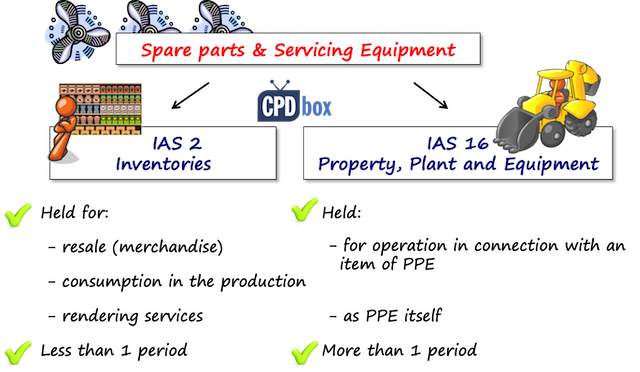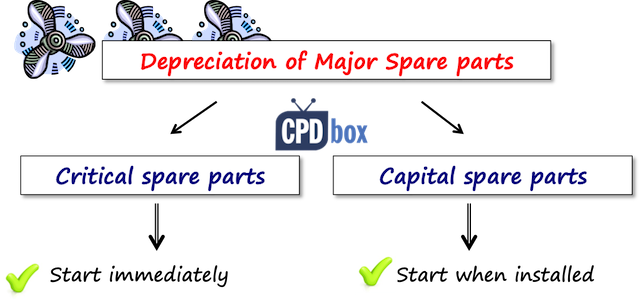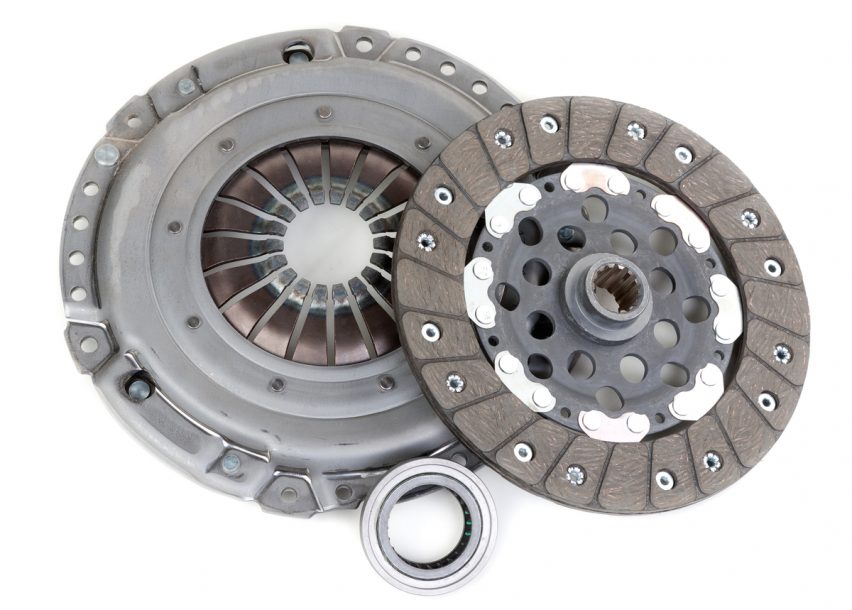How to Account for Spare Parts under IFRS
One of the biggest issues related to property, plant and equipment is accounting for spare parts, servicing equipment, stand-by equipment and similar items.
IFRS standards are pretty silent about this topic, the guidance is very limited and as a result, companies need to rely on careful assessment of the situation and their judgment.
There are 2 main issues related to spare parts and similar items:
- Should we recognize and present them as property, plant and equipment (“PPE”) or as inventories?
- How should we depreciate major spare parts that are a part of PPE?
Let’s try to analyze them.
Spare parts = PPE or Inventory?
The first major issue with spare parts is to determine whether they are considered as “inventories” and thus accounted for under IAS 2 Inventories, or they are considered as “property, plant and equipment” and thus accounted for under IAS 16 Property, Plant and Equipment.
You should be very careful in assessing whether you deal with IAS 2 or IAS 16, because the wrong selection can have serious implications on your financial statements, for example:
- Incorrect measurement of your spare parts (depreciate or not?);
- Incorrect presentation of your spare parts (non-current assets or current assets?)
For all spare parts it’s good to remember that in most cases, they are inventories.
But it’s not so simple as that.
The standard IAS 16, paragraph 8 specifically says that spare parts are recognised in accordance with this IFRS when they meet the definition of property, plant and equipment (thus they need to meet the definition of PPE).
As a result, you should consider the following criteria when assessing your spare parts:
- Purpose of the spare parts
Are spare parts consumed in a production process (whether to produce goods or render services) or held as merchandise for resale?If yes, then it might indicate they are inventories.
If not, then spare parts might be considered PPE.
- Time aspect
Do you need spare parts to operate some other asset during more than one period? Do you plan to use these items during more than 1 period?
If yes, then they might be PPE.
If not, then they are inventories.

Some spare parts are easy to classify, for example back-up engine with significant acquisition cost is a major spare part and thus accounted for as PPE.
Some other items might not be that easy. Therefore, apart from the 2 criteria above, there are even more issues to consider:
Materiality
Sometimes, you can have an asset that is used in the production process for more than 1 period, but its acquisition cost is very small.
And sometimes, you can have a huge amount of similar spare parts or servicing equipment.
For example, small tools, moulds, pallets or containers used for more than 1 period.
In this case, these assets are PPE rather than inventories, but it’s not very practical for keeping track of these assets and their accounting, is it?
It would be very hard to label each individual screwdriver, not mentioning depreciation!
In this case, you need to assess materiality, or significance of similar spare parts and servicing equipment for your financial statements.
And not only materiality on an individual, asset-by-asset level, but also materiality of the whole group of these assets.
So, if you have 2 hammers and 1 screwdriver, then although it’s in fact PPE, it’s reasonable to account for these items as for inventories and expense them in profit or loss.
However, if you own 10 000 hammers and 5 000 screwdrivers, then if their cost is material with respect to your financial statements, you shouldn’t simply expense them.
This brings me to the second consideration – unit of account.
Unit of Account
The standard IAS 16 says that it’s up to an entity to determine how it will apply the recognition and measurement criteria – whether to an individual asset, or to a group of assets on an aggregate basis (IAS 16.9).
Simply speaking: what is our item of PPE in the case of large amount of small items?
Is it the individual single screwdriver with the cost of USD 5?
Or, is it the set of 5 000 screwdrivers with the cost of USD 25 000 (5×5 000)?
Both options are possible, but the first one does not make much economical sense, as it would be difficult to keep records for 5 000 small assets.
As a result, when you have a lot of servicing equipment or spare parts with small individual cost, then it’s reasonable to account for them as for PPE under IAS 16 if their aggregate value is material.
In such a case, it’s practical and totally acceptable to apply paragraph 9 of IAS 16 and measure these small assets as 1 item of PPE – a set of assets.
Minimum Levels
In some businesses, minimum levels of inventories must be maintained in order to operate assets.
In this case, “inventories” are not separable from an item of PPE and such “inventories” are in fact a PPE.
Take oil refinery, for example. My limited knowledge about refineries tells me that refineries must contain some minimum quantity of oil to operate. This oil must stay there until the plant ceases operations.
Is this minimum level of oil classified as inventories or an item of PPE?
As it is not consumed in a production process, but it is necessary for plant’s operation and it’s going to stay there until the plant closes (for more than 1 year), it’s PPE.
And as strange as it might be, you need to account for a minimum level of oil as for PPE, and for the remaining oil as for inventories.
How to Depreciate Spare Parts in PPE?
After we learned how to classify an item as PPE or as inventories, the question is when and how to depreciate major spare parts that are classified as PPE.
Depreciation of spare parts is not specifically addressed by the standards and therefore, we must apply our judgment.
IAS 16 in paragraph 55 only says that the depreciation should begin when an asset is available for use.
What’s the issue here?
Often, the spare parts are in the warehouse and not directly in use and therefore, it’s questionable when to start depreciation charges.
Should you depreciate spare parts only when they actually replaced a defective part and are in operation?
Or, should you depreciate spare parts once they are in the warehouse, regardless their actual usage? In such a case, what is their useful life?
It depends on the nature of the spare part.
If you keep the spare part to ensure smooth operation of some machinery without interruptions, then the depreciation period should start immediately.
The reason is that such a critical spare part is available for use immediately when an original part in the machine stops working.
However, if you keep the spare part to be used as a replacement part at some future time and you are sure that this part will be installed and put into use at a later date, then the depreciation should start when the part is installed.

You should carefully assess the nature of your spare parts, their function and future use and only then decide. Here, judgment is necessary.
This issue was addressed by several IFRS Discussion groups in the past and I’m pretty sure that this is a great discussion topic even now, so please go ahead and leave me a comment right below this article. Thank you!
JOIN OUR FREE NEWSLETTER AND GET
report "Top 7 IFRS Mistakes" + free IFRS mini-course
Please check your inbox to confirm your subscription.
Recent Comments
- mahima on IAS 23 Borrowing Costs Explained (2025) + Free Checklist & Video
- Albert on Accounting for gain or loss on sale of shares classified at FVOCI
- Chris Kechagias on IFRS S1: What, How, Where, How much it costs
- atik on How to calculate deferred tax with step-by-step example (IAS 12)
- Stan on IFRS 9 Hedge accounting example: why and how to do it
Categories
- Accounting Policies and Estimates (14)
- Consolidation and Groups (25)
- Current Assets (21)
- Financial Instruments (56)
- Financial Statements (54)
- Foreign Currency (9)
- IFRS Videos (74)
- Insurance (3)
- Most popular (7)
- Non-current Assets (56)
- Other Topics (15)
- Provisions and Other Liabilities (46)
- Revenue Recognition (27)
- Uncategorized (1)





Thanks Professor Silvia
Your explanation was both thorough and easy to understand. It has truly helped me to gain a deeper understanding of the topic, and I feel more confident moving forward with this knowledge.
I really appreciate the time and effort you took to break things down so effectively
Informative piece and dependent on the industry. I the airline line industry it is good practice to hold some aircraft spares in stock as there is lead time between order and receiving the spares may lead to having aircraft on ground which would lose money. For the minimum quantity of service items my gut feeling would be PPE AIS 16 rather than inventory AIS 2.
Right 🙂 thank you
Nice interpretation about the concept of spare parts whether it could be inventory or PPE and after recognition PPE its depreciation process.
I have found this article extremely comprehensive and very useful to me. It makes it clear to me that the distinction between IAS 2 and IAS 16 applies to industries which have to keep stocks of parts readily available for continuity of production process. A judgement has to be excersized in accordance with appropriate accounting treatment which has been so well explained in this article.
Regarding the timing of depreciation of spares, does IAS 16 or any other standard made any distinction between critical and capital spares or this is just a personal interpretations?
It is NOT in the standards, and it is NOT a personal interpretation. This is the interpretation based on the industry best practices, embraced also by the top accounting firms.
for capital spares, the period between held and replacement which may be more than 1 period,
can we treat spars as PPE without depreciation till it installed, is that allowed by IFRS and in which part?